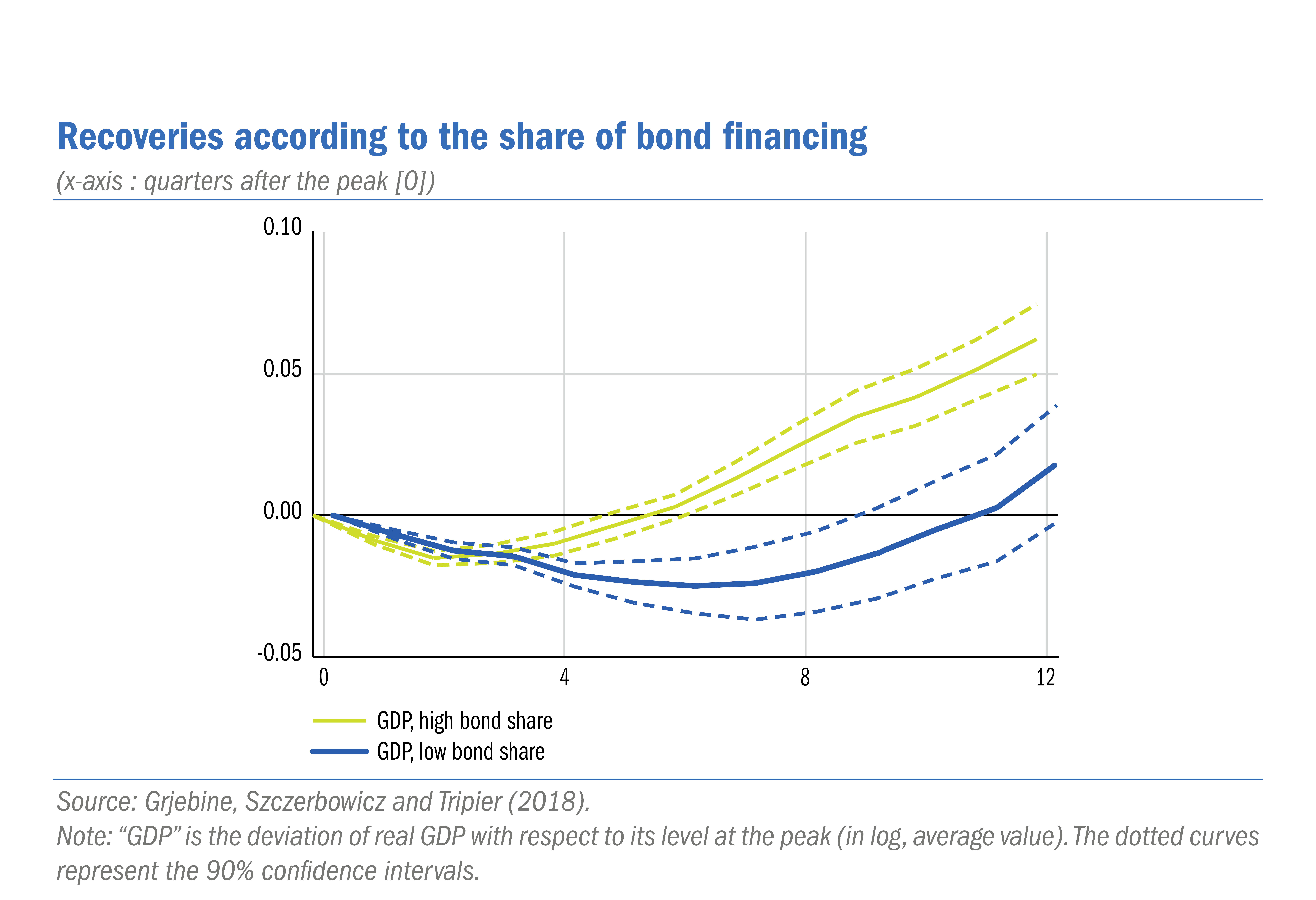
Rue de la Banque no. 63: Corporate debt structure and economic recoveries: a cross-country analysis
The recovery after the 2008 crisis was faster in the United States than in the euro area. Some authors argued that the US financial system’s capacity to replace bank financing with corporate bond financing contributed to the faster recovery. This Rue de la Banque summarises an empirical investigation of the business-cycle behaviour of corporate debt structure in 23 countries over the period 1989-2013. The results highlight two interesting facts. First, the substitution of loans for bonds in recoveries is a regular property of business cycles. Second, economies with a high share of bond financing and significant bond-loan substitution recover faster from recessions. These findings support the Capital Markets Union project which includes the diversification of funding sources for European firms.
By Thomas GRJEBINE, Urszula SZCZERBOWICZ, Fabien TRIPIER
The structure of US corporate debt shifted from bank debt to market debt during the Great Recession. This time-varying composition of corporate debt has been stressed by Adrian et al. (2012) and Becker and Ivashina (2014) as essential to understanding the transmission of the financial crisis to the non-financial sector. Indeed, the issuance of market debt helped firms to mitigate the contraction in the supply of bank debt by troubled banks. In line with these findings, the European Commission (2014) advocates developing markets for corporate debt securities to replace impaired bank lending during recessions.1 However, besides the recent US experience, macroeconomic evidence on the cyclical behaviour of corporate debt structure and its role in recovery is relatively scarce.2 This Rue de la Banque is based on Grjebine, Szczerbowicz and Tripier (2018) who provide a first cross-country analysis of the behaviour of corporate debt structure along the business cycle.
Corporate debt structure varies across countries
Before turning to the business cycle analysis, we present a cross-country overview of the structure of corporate debt. To do so we construct a ratio – referred to as the “bond share” – that compares the amount of bonds issued by non-financial corporations to the total credit provided to them.3 The “bond share” is a homogeneous measure of corporate debt structure in 23 advanced and emerging economies – for most of them since 1989. On average, debt securities account for 17% of the total credit provided to non-financial corporations over the period covered. In the United States, bond financing is particularly significant: bonds already accounted for more than 50% of total corporate debt in the 1950s and exceeded 70% after the recent crisis. The second country to rely significantly on bond finance is Singapore, with a mean value of 40%, followed by the United Kingdom, with a mean value of 22%. The share of bond financing in the euro area is much smaller and heterogeneous. On average, bond financing accounts for 18% of corporate debt in France compared with only 6% in Germany, 5% in Italy, 4% in Spain and 1% in Ireland.
Download the PDF version of this document

- Published on 06/01/2018
- EN
- PDF (622.21 KB)
Updated on: 06/22/2018 15:16
